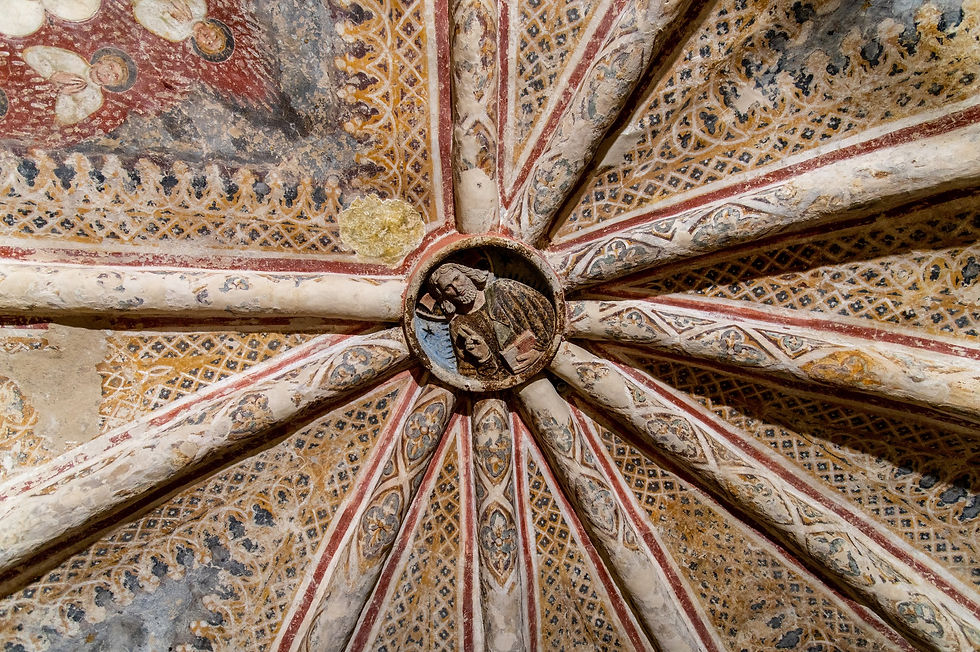SAN FRANCESCO DEL PRATO: a dramatic history to be fully disclosed
- Raffaella Cattelani

- Apr 29, 2023
- 3 min read
Updated: Dec 28, 2023
The exceptional history makes it unique in the world

1240 - FRANCISCAN FRIARS COME TO PARMA In the early 1200s pilgrims in search of divine forgiveness arrived in Parma from Assisi, the birthplace of San Francesco, and settled in a meadow on the edge of the city, called the Pratum Regium, an area intended for religious fairs , military tenders, or markets. The settlement accompanied the growing needs of a new religiosity that was establishing itself in the secular culture of the time, so the attraction between the friars and these new inhabitants was immediate and inevitable. Soon the city communities took charge of the building of the church and the upper classes began to choose this place as a burial place for their families. Thus, if on the one hand the monastic orders contributed to the maintenance of the peace by also providing for the political management of the city, on the other hand the civic forces guaranteed their protection and subsistence. Thus monasteries and convents became a junction point between parishes and cathedrals and between centers of political and religious power.
In 1240 the construction of the current church of San Francesco del Prato began: the project was expanded in the following decades up to its current size.
1298 - 1398 - 1443 THE PHASES OF THE CONSTRUCTION OF THE CHURCH
According to the hypothesis of the bishop and famous historian Nestore Pelicelli, the construction of the church would have taken place in three phases, even if the foundations were laid in a short time and the project followed was always the initial one. The central apse was built first and its architectural decorations with round arches indicate that the construction took place in the transitional period between the Romanesque and Gothic styles. Subsequently the two minor apses were built. It is believed that, once the apses and perimeter walls had been built, the central nave and consequently the side naves were raised in stages. The latter, during each advance, were equipped with chapels. The facade was raised in 1398 following the lengthening of the perimeter wall by 19 meters and with the insertion of three new chapels.
The bell tower was built between 1506 and 1520 by Bernardino Zaccagni. The square-based tower is decorated with terracotta on the four side facades, and in the belfry there is a trifora that ends in an octagon. Four bells soared at the top, spreading their sound over the city and the countryside.
1810 - 1992 THE LONG NIGHT WHEN IT WAS A PRISON
In 1804 Napoleon's French troops occupied the church and the adjoining convent, driving out the community of Franciscan friars who lived there. The boundary walls were raised and transformed into high walkways with observation sentry boxes, the central nave was used as a laboratory, while the central naves were raised to make room for the cells and services of prisoners and guards. The large and majestic Gothic arches were enclosed between infill walls. The entire interior was transformed into a U-shaped structure at the base of which were the concierge services. The main altar, the altars of the chapels and the finely carved wooden choir were totally destroyed. Painted canvases and panels were dispersed, while the frescoes were covered with greyish plaster. The fourteenth-century windows were plugged in, the pronaos was destroyed and new windows with double iron grates were opened.
The bell tower was transformed into particularly dangerous prison cells.
2018 - THE RETURN TO THE DIOCESE AND THE RESTORATION The monastery and the church were used as a prison until 1992 and returned to the Franciscan Order from 1974 to 1993, a period in which archaeological excavation campaigns were carried out. The management of the entire former prison compound was then transferred to the University of Parma which contributed to its recovery and use for teaching. In December 2017, the University of Parma returned the church to the State Property and the Diocese in February 2018 obtained the concession for the use. The restoration works aim to bring the church back to worship without ignoring the wounds that the prison has inflicted.
October 3, 2021 - THE NEW CONSECRATION OF THE CHURCH
After a centuries-long wait, on October 3, 2021 San Francesco del Prato is re-consecrated as a place of worship: About seven hundred days after the start of the restoration works, the Church is finally returned to the city. The celebration of the Holy Mess and the ceremony of the Dedication of the church to San Francesco marks a new beginning. It was a truly unique historical moment witnessed by the many faithful who crowded the church and the square in front of it.






Comments